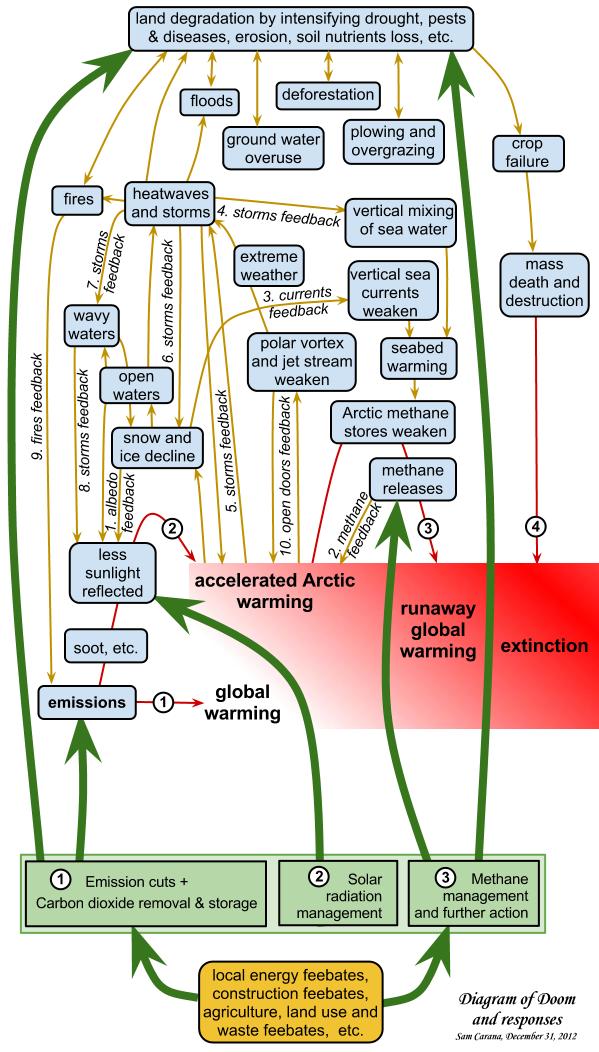 |
| image from DarkSnowProject.org |
In parts of Greenland where winter snow loss during each melt season exposes impurity-rich bare ice, the surface reflectivity drops from 85% to 30%. Consequently, most of the 24-hour sunlight goes into ice melt. In this Dark Zone, the impact of soot manifests strongest in a self-reinforcing feedback loop that research by Jason Box has shown to have doubled melt rates in the past decade.
High on the inland ice sheet where melting is rare, satellite data show surface darkening making the researchers suspect that wildfire and industrial soot are to blame. Darkening here promotes snowpack heating, bringing earlier melt, keeping melt going longer. Here is where this feedback is changing the ice sheet in surprising ways, leading to complete surface melting in year 2012.
To measure the extent to which soot particles enhance melting, Jason Box is organizing a Greenland ice sheet expedition for 2013. The Dark Snow Project expedition is to be the first of its kind, made possible by crowd-source funding.
References
- Fire and Ice: Wildfires Darkening Greenland Snowpack, Increasing Melting (News Release from Byrd Polar Center)
http://bprc.osu.edu/~jbox/DS/20121205_news_release_CALIPSO_etc.pdf
- The DarkSnowProject
http://darksnowproject.org
-Video: Sampling Greenland, the Dark Snow Project, by Peter Sinclair, produced at Greenman Studio, Midland, MI.
http://www.youtube.com/watch?v=vT6H7HPWkqU
- Where there’s fire there’s smoke - Blog by Jason Box, the Meltfactor.org
Further reading
- Greenland is melting at incredible rate
http://arctic-news.blogspot.com/2012/07/greenland-is-melting-at-incredible-rate.html
- Turning forest waste into biochar
http://arctic-news.blogspot.com/2013/01/turning-forest-waste-into-biochar.html
- Glaciers cracking in the presence of carbon dioxide
http://arctic-news.blogspot.com/2012/10/glaciers-cracking-in-the-presence-of-carbon-dioxide.html
- Aviation Policies
http://arctic-news.blogspot.com/2012/12/aviation-policies.html
http://arctic-news.blogspot.com/2013/01/turning-forest-waste-into-biochar.html
- Glaciers cracking in the presence of carbon dioxide
http://arctic-news.blogspot.com/2012/10/glaciers-cracking-in-the-presence-of-carbon-dioxide.html
- Aviation Policies
http://arctic-news.blogspot.com/2012/12/aviation-policies.html









